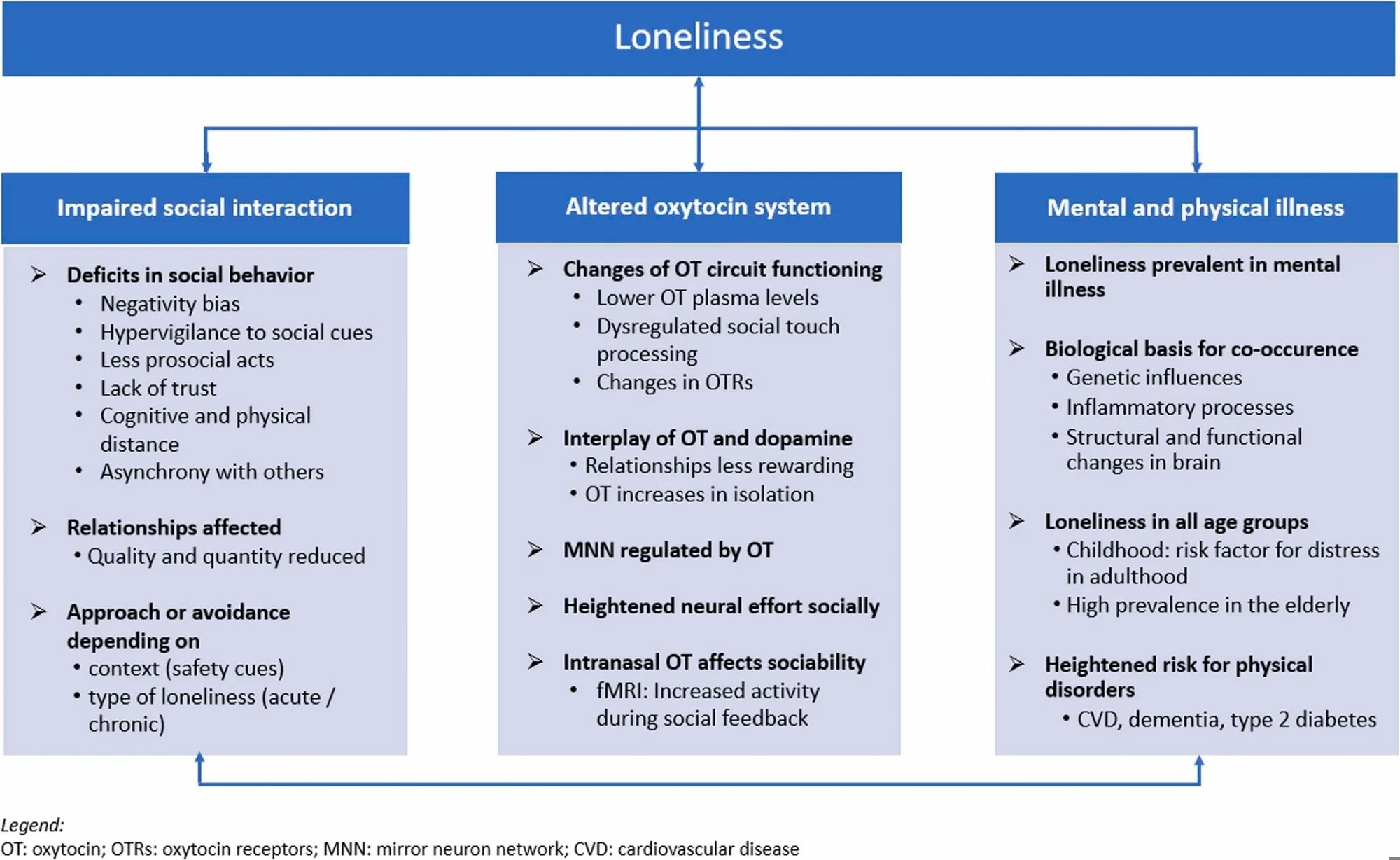New publications
Loneliness is linked to social dysfunction, oxytocin, and disease
Last reviewed: 02.07.2025

All iLive content is medically reviewed or fact checked to ensure as much factual accuracy as possible.
We have strict sourcing guidelines and only link to reputable media sites, academic research institutions and, whenever possible, medically peer reviewed studies. Note that the numbers in parentheses ([1], [2], etc.) are clickable links to these studies.
If you feel that any of our content is inaccurate, out-of-date, or otherwise questionable, please select it and press Ctrl + Enter.

Loneliness is a distressing feeling that occurs when there is a gap between one's desired and actual level of social connection. It is often characterized by a sense of inability to form meaningful relationships. Loneliness manifests itself through a range of social dysfunctions that sustain it in a variety of ways.
Studying this phenomenon requires drawing on multiple disciplines, including neuroscience, sociology, and clinical medicine. A recent review in Neuroscience & Biobehavioral Reviews presents a multidimensional model of loneliness.
What is loneliness?
The Global Initiative on Loneliness and Connection describes it as "a subjective, unpleasant or distressing feeling of insufficient connection with others, accompanied by a desire for more or more satisfying social relationships."
Loneliness is therefore subjective and distressing. It cannot be fully assessed or predicted by objective parameters such as social isolation or a small social circle. With the decline in birth rates in developed countries, the prevalence of loneliness can be expected to increase among the aging population.
The Impact of Loneliness on Social Interactions
People who experience loneliness have difficulty engaging in meaningful social interactions. They focus on the negative aspects of such interactions, experience less satisfaction, and experience more conflict. They are more withdrawn, avoid synchronic work, and rarely seek social contact or emotional closeness, which can be called hyposociality.
On the other hand, they may exhibit hypersociality, seeking to form relationships and experiencing more positive emotions with loved ones. This can be compared to the brain's response to food after a period of starvation. Loneliness may be a physiological response to a lack of social connections.
Loneliness and oxytocin
Oxytocin, the attachment hormone, stimulates the desire for social relationships. The number of cells that secrete oxytocin and its levels increase with loneliness, indicating a compensatory role in emotional deprivation. Chronic loneliness, in contrast, reduces oxytocin levels in an adaptive manner.
Loneliness and illness
Loneliness is associated with an increased risk of both mental and physical illness. It is a marker of depression and is associated with a higher risk of major depression, anxiety, personality disorders, schizophrenia, alcoholism, and bulimia. Mental illness can both cause and worsen loneliness.

A translational model of loneliness that summarizes key findings on social interaction, oxytocin, and illness
Cardiovascular disease is 30% more common in lonely people, and loneliness is a more significant risk factor than even diabetes. It also increases the risk of mortality in cancer patients and is associated with dementia. Loneliness predicts suicidal ideation in some subgroups and can reduce self-efficacy, making it more difficult to manage medical conditions and can lead to premature death.
Conclusion
"Disrupted social interactions, the oxytocin system, and illness are interrelated in lonely people, and recognizing these links is key to understanding the complex construct of loneliness."
Future research should focus on identifying and exploring these relationships and the conditions under which loneliness occurs as a cause or effect. The role of oxytocin administration and other preventive aspects of combating loneliness to improve mental health should be explored.
